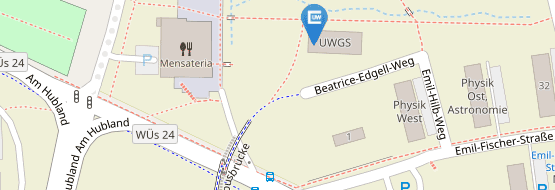Söllner, Katalin
Congratulations on passing the viva voce examination
on 2 June 2022.
Dissertation topic: "Clitics in the dialects of Franconia."
Contact address at the University of Würzburg:
Institute of German Philology
Unterfänkisches Dialektinstitut
Am Hubland
D-97074 Würzburg
First supervisor: PD Dr Almut König (University of Erlangen)
Second supervisors:
Class in the Graduate School: "Philosophy, Languages, Arts"
Doctorate in the Graduate School from SS 2016.
Abstract:
When it comes to clitics, one searches in vain for clear rules. Although they are not new phenomena - earlier evidence already comes from the AHD - "the previous attempts at definition (...) are mostly insufficient and inconsistent among themselves" (Nübling: 1992, p. 2.).
One reason for this could be that the development of clitics is not yet a finished project: the number of clitics has been constantly increasing since the MHD. Nübling speaks of a 'grammaticalisation construction site', whereby "some areas have been completed, but others have not even been conceived" (Nübling: 2005, p. 106).
To date, there has been no in-depth study of clitics in the dialects of Franconia. As part of my research project, I would like to use the material from the Bavarian Language Atlas to describe and compare the use, frequency and characteristics of clitics in the dialects of Franconia. My main focus is on the fusion of verb and personal pronoun or preposition and definite article.
The question is whether regional differences can be identified and whether these confirm previously known dialectal areas or reveal new markers.
The work begins with a definition of the terms, a presentation of the current state of research and a description of the individual dialect areas.
The questionnaires of the three language atlases form the research material: Upper Franconia / Middle Franconia / Lower Franconia. Firstly, the questions in which the following constellations occur are selected: preposition + article and verb + personal pronoun.
These are then divided into groups and the usable ones are selected. The research questions are then evaluated in terms of frequency, characteristics, behaviour and occurrence - as well as on semantic, formal, phonological and syntactic levels. The individual dialects are analysed first, then the dialects are compared with each other.
The selected contributions are then analysed in a new context. New maps are then created based on these results.






